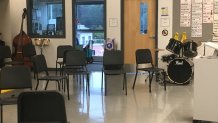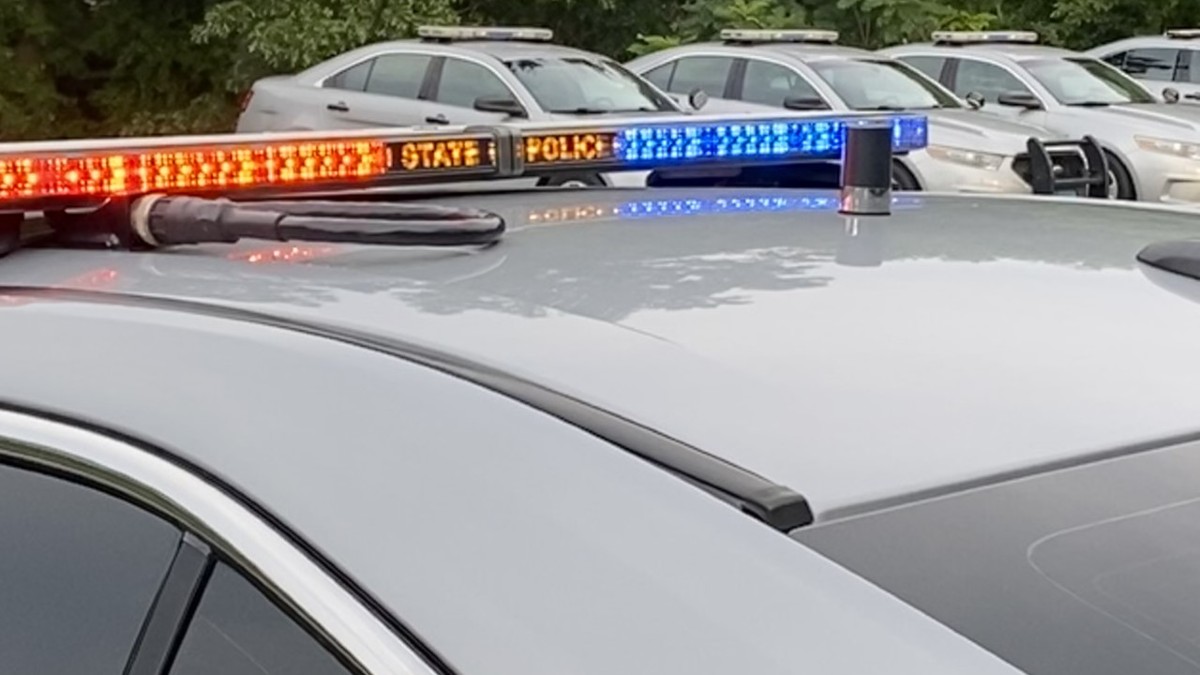While the school year is coming to an abrupt end for students across the state, leaders are already thinking towards next fall, with the hope that children will be able to return to the classroom.
A recent survey by Connecticut’s largest teachers union, the Connecticut Education Association, sheds light on some of the concerns educators have and the challenges they believe they’ll face.
“It’s going to be case by case decision for what districts are and are not ready to go back into school,” said Sheena Graham, a high school choir teacher in Bridgeport, and Connecticut’s 2019 Teacher of the Year recipient.
Graham said long-distance learning has had its highs and lows. Some of her students have spotty internet connections.
“I can see they’re not there, but then they’re back, but then they go out,” said Graham, noting that even her own internet plan hasn’t always met her needs since she started working from home.
Graham said she knows returning to the classroom will present a new set of obstacles for her singing students.
“We will actually be shooting particles further than just talking,” she pointed out. “If we wear facemasks, which is required at this point, they’re thinking of requiring for schools in the fall, then what will our singing sound like?”
Local
Many of the 3,000 teachers surveyed by the CEA last week said they have concerns about returning to the classroom in the fall.
“What we want to see are guidelines issued by health care experts that explain how we can go back to school and maintain the safety of students and staff, and also whether that is logistically possible,” said Don Williams, CEA’s executive director.
The challenges teachers raised include inequities in long-distance learning should schools have to close again, keeping older teachers safe, and social distancing on the school bus.
“We’re asking about temperature taking. When do you take a child’s temperature? Do you? If you take it once they’ve entered school they’ve already been on the bus. Do they have to take their temperature before they get on the bus?” said Amy Farrior, a kindergarten teacher in the Marlborough school district.
Forty-three percent of teachers who responded to the survey said they are at higher risk for severe illness from COVID-19. That number increased to 71 percent for teachers with 30 or more years in the classroom.
Graham, who has been a public school teacher for 37 years, shares that concern.
“It is challenging to know that even if we’re healthy, it’s still that students can bring it to us,” said Graham.
The state’s education commissioner, Miguel Cardona, said the goal is to get kids back in the classroom, but not at the expense of health and safety.
“Let’s not say we’re going back to where we were on March 11. We have to think about how to go back to school safely and if we do it well there’s a greater likelihood we’re going to get back to what we remember school to be sooner,” he said.
Farrior cleaned out her classroom Thursday. She said the last two months can’t compare to the rest of her 15-year teaching career.
“Part of my heart just aches because I know when I go back it’s not going to be teaching as I know it,” she said. “I can’t even put into words how crazy it’s been.”
She’s already worried what will happen next school year.
“How do we social distance to kindergarteners? Our institution is based on socializing,” Farrior said.
As much as Farrior said she wants to be back in the classroom and face-to-face with her students, she’s not sure that’s even possible under current guidelines.
“As a teacher I need to be hands-on, correct a pencil grip, correct scissors, helping a child blow their nose, go to the bathroom, open doors for them,” she pointed out.
She also said that long-distance learning is not designed for those new to school.
Kindergarten shouldn’t be in front of a screen it should be on a carpet in a circle singing songs, holding hands, learning together. I want to be back with my students. I want to be there and see them in person but I want them to be safe and I want them to have the experience that they deserve.
Amy Farrior
As Farrior worried about keeping masks on her kindergarteners, Graham said her high school students face their own learning curve over the risks of COVID-19.
“My students were shocked when I said to them, you can get it. They really thought that they had no chance of getting it and didn’t see why they needed to change any of their habits. It was mind-blowing to me, their reaction,” said Graham.
She also worried that social distancing protocols might mean fewer students are allowed to participate in choir.
“I think that the circulation in the buildings is going to be huge. I think the space allotted in the classrooms is going to play a huge factor,” Graham said.

Williams called long-distance learning a second-class experience.
“There’s no question, especially after going through these last couple of months, that the best way to deliver education is in a classroom, in person, where students can engage directly with their teacher, and in the learning process,” said Williams.
Knowing that the unpredictable coronavirus could cause a second school closure in the fall, he said his members are calling on state leaders to create a plan for doing so in a timely manner, requirements for reopening, and free computers and internet access for students learning from home.
“What we want to see are guidelines issued by health care experts that explain how we can go back to school and maintain the safety of students and staff, and also whether that is logistically possible,” said Williams.
The CEA is pushing for social distancing measures that could include smaller classes, one-way hallways, and no assemblies.
Farrior said she’s worried about recess and the implications all social distancing requirements will have on young students.
“We don’t stand six feet apart in a hallway. We sit at tables. Our tables aren’t six feet apart so it’s looking like kindergarteners will have desks. That’s not my teaching philosophy, I like cooperative groups. I think it’s going to be hard for teachers to back to school with things they don’t necessarily believe in but they know that they have to follow in order to keep everybody safe,” she said.
When asked whether their schools are equipped to provide for frequent and sufficient hand washing, nearly two-thirds of teachers who filled out the survey said “no,” according to the CEA.
“Even with allowing the students to go to the restrooms more often than that means the restrooms need to be sanitized throughout the day,” pointed out Graham.
At Marlborough’s elementary school the kindergarten classrooms have bathrooms and sinks, but that brings up a new set of challenges for teachers like Farrior.
“Are we responsible for wiping down the bathroom each time we use it? I don’t know,” she said.
“We know hand-washing is a major strategy to reduce transmission,” said Cardona. “That’s some of the work that’s going to have to happen in districts. Whether that means they’re adding sinks or hand-washing stations that will be determined more locally.”
Cash-strapped school districts may have to cover the additional cost of keeping students safe.
“We’re faced with reduced budgets across the state but yet we have expenses that we can’t even imagine we’re going to be spending, whether it be PPE or more staff for smaller class sizes,” said Farrior.
“I really don’t see any way around the expense, and I do believe our students and we are worth it,” Graham added.



